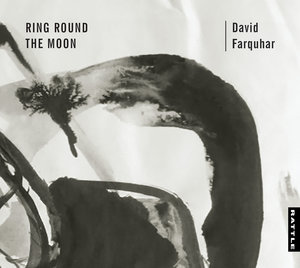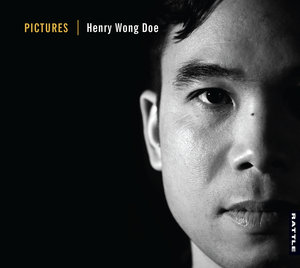Supertonic conducted by Isaac Stone
‘Shakespeare’s Sister: celebrating the music of women who created art in the shadows of men’
Music by Hildegard, Clara Schumann, Alma Mahler, Fanny Mendelssohn, Amy Beach, Francesca Caccini and Lili Boulanger, and two New Zealanders: Dorothy Buchanan and Rosa Elliott (who, at age 20, was the ‘featured composer’)
Pipitea Marae, Thorndon Quay
Sunday 20 May 6:30 pm
Middle C has reviewed two previous concerts by Supertonic (both by Rosemary Collier), in 2015, and she was impressed (where have we been in the meantime?). They were in different venues, the Sacred Heart Cathedral and the New Zealand Portrait Gallery. This time they gave me my first experience in the Pipitea Marae, which I’m ashamed to confess I’d never been in; a building of normal construction, with impressive Maori mural and ceiling decoration.
The concert was very well organised, with enough people at the door to take tickets and give seat numbers and generally manage. The seating on either side of a centre aisle was turned to face inwards by about 15 degrees. A congenial feeling.
One of the first impressions as the music began, was the splendid acoustics of the large whare, allowing distinct parts of the choir on the one hand and the choir singing homogeneously on the other to be heard as a finely balanced ensemble. Enhanced I imagine by the high vaulted ceiling and walls which were probably plastered and so a bit more absorbent than concrete, stone or timber.
The singers were ranged in four rows at increasing heights; the piano to the left and to the rear left, the ‘Concert host’, Clarissa Dunn, and a microphone. After the choir had entered, a chant arose at the back and the nine women’s voices came slowly to the front singing Hildegard von Bingen’s ‘Quem ergo femina’. The fine ensemble augured well.
This is the moment to remark admiringly on the paper-work. A nicely printed programme on glossy paper, with a woman in profile who has just released a bird – a swallow, a symbol? Inside, notes on the choir, on host Clarissa Dunn and the ‘featured artist’, the 20-year-old Canterbury University student composer, Rosa Elliott. All the composers’ names and the titles of the pieces were listed and on a separate page, original words and translations of all the songs in foreign languages.
There was a distinct air of professionalism about the entire presentation, not least the evidence of excellent, thorough rehearsal by Isaac Stone, a gifted young conductor who has a very impressive and interesting record both as musician and leader in musical and social areas, especially in the Maori sphere.
One thing we could probably not reasonably expect was to encounter music that we knew – though I speak only for myself.
Clarissa Dunn’s introduction
An unexpected element, but one that was illuminating was Clarissa’s quoting an essay by Virginia Woolf, A Room of One’s Own, on the importance of a space for creative work; it related to Dorothy Buchanan’s cycle. The essay presents an “argument for both a literal and figurative space for women writers within a literary tradition dominated by men” in the words of Wikipedia.
One hears often about the importance of having a private place in which to compose. Some such composing sanctuaries are famous, like Mahler’s two lake-side hideaways, at Steinberg-am-Attersee and Maianigg on the Wörthersee in Carinthia, or Ravel’s house in the country, Le Belvédère, at Montfort-l’Amaury. The same applies to women but it is harder for them to find such space.
Clara Schumann’s composing was not forbidden but after Robert died she composed no more and devoted herself to performance and the promotion of Robert’s music. The choir sang Drei gemischte Chöre (3 mixed choruses). They were sung with flawless ensemble, purity of tone and clarity of diction.
American composer Amy Beach’s music is heard more these days than a few years ago. She was, like Clara Schumann, both composer and pianist and her husband wanted her to concentrate on composing rather than performance. Again, the a cappella Three Choral Responses were accomplished works if not particularly original, showing little sign of absorbing composition trends of around the turn of the century.
Alma, Lili and Francesca
Then three singers from the choir sang songs by Alma Mahler, Lilli Boulanger and Francesca Caccini. Samantha Kelley sang the first, Die stille Stadt, with a very agreeable voice, and pianist Matthew Oliver, who was occasionally hesitant.
Lili Boulanger was the first woman to win the Prix de Rome at the Paris Conservatoire and though no barriers were put across her musical career, she died aged 24, 100 years ago. (She is one of this year’s important anniversaries; the others: Debussy’s death 100 years ago, Bernstein’s birth 100 years ago, Gounod’s birth 200 years ago, Rossini’s death 150 years ago*). Reflets, set to a poem of Maurice Maeterlinck, sounded an altogether more inspired composition, with an interesting, even adventurous piano accompaniment; Natalie Williams’s voice was well attuned to the music if occasionally insecure.
A duet from three centuries earlier, Aure Volanti by Francesca Caccini was sung by sopranos Natalie Moreno and Sophie Youngs; there were clear marks here of a fine composer, whose father was also a leading composer who composed one of the first operas in 1602. Women composers were not all that rare at the time; slightly later, Barbara Strozzi was famous and she has re-emerged. This performance handled the weaving voices and Isaac Stone’s piano accompaniment in a charming, authentic manner.
Fanny, Felix’s sister
Felix Mendelssohn’s sister Fanny (Hensel her married name) was also a gifted pianist and composer, whose musical inclinations and gifts were rather discouraged by Felix. Her settings of three of Eichendorff’s poems, Gartenlieder, appealed to me as much as anything in the concert; the writing was fluent and there was plenty of melodic charm and character, far from clichéd. I enjoyed the varied expressive qualities that were well conveyed in the choral performance.
The next group of pieces by Dorothy Buchanan was a curious composition: for flute (Liz Langam) and wordless women’s voices, a small cycle called Five Vignettes of Women. They were marked, Virginia (Woolf), Olivia (Spencer-Bower), Robin (Hyde), Fanny Buss and Katherine (Mansfield). The Virginia Woolf song was the link with the introductory reference to Woolf’s essay, A Room of One’s Own. The set was interestingly varied in style and mood and the different instruments produced some novel impressions. The whole struck me as very engaging work, admittedly with a not very important vocal element, but enough to justify its inclusion here.
Rosa Elliott’s Songs for Sisters
Featured artist was 20-year-old composer Rosa Elliott who set three of great 19th century novelist George Eliot’s (real name Mary Ann Evans) poems: Songs for Sisters.
Conductor Isaac Stone is quoted in a SOUNZ website saying that he fastened on her to compose for the choir because of her “incredible way with haunting melodies, matched perfectly with choral colours”. They involved violinist Vivian Stephens, pianist Matthew Oliver and Samantha Kelley using castanets. The first song, O Bird, coloured with hushed breathing, employed an undefined bird-call that later imitated a vocal motif from the choir. I lost track of the breaks between the three songs; however, the unusual combination of vocal effects, occasional distinct words, the melodic attractiveness, Stephens’ excellent violin contribution offered lively variety. The castanets marked the Spanish character of the third song, Ojala, in which the choir could be detected chanting the name. By the end I was won over by the unusual character of this trio of songs, their confident, surprisingly grounded feeling. I think they have a life.
The concert ended with a, for me, puzzling, enigmatic song: Quiet by (I suppose) a young woman called Milck. I confess to looking it up on Google. It’s a song protesting sexual violence in the wake of the Harvey Weinstein scandals, frankly bluesy in style, but more importantly, arresting in both its music and its message. She writes that it is part of “a massive movement of women and survivors speaking out against sexual assault, I find myself in awe and moved to my core”. I caught words of intimate advice to vulnerable girls; it was, I guess, a timely insertion for the choir whose purpose here was to dramatise efforts to empower women and demand changed behaviour on the part of men, and sexual exploitation is as evil as depriving women of the wherewithall to create music.
An interesting and poignant way to end the concert which had virtues and strengths at many levels, social and musical.
*Composer Anniversaries
This sort of thing interests me. I was half aware of several other composers who were born or died in these or similar years. There’s Arrigo Boito (Verdi’s librettist for Otello and Falstaff and also the composer of Mephistophele), and Hubert Parry both of whom died in 1918. Then I came upon a contribution to the topic from a kindred spirit who writes a column in the French Opéra Magazine, Renaud Machart. He wrote about Lili Boulanger, naturally, and he also noted the successor and in some ways Offenbach’s rival in the post Franco-Prussian war period (1870 – 1880): Charles Lecocq (1832-1918). His best known pieces were La fille de Madame Angot and Le petit Duc. And very tongue-in-cheek, Machart also pointed to one Procida Bucalossi (1832-1918), a British/Italian composer of light music; with that background, he naturally wrote a successful operetta for London in neither language, entitled Les Manteaux Noirs (The Black Cloaks).
Looking back to 1868, as well as Rossini’s death, Swedish composer Berwald died. And François Couperin was born in 1768, 250 years ago.

